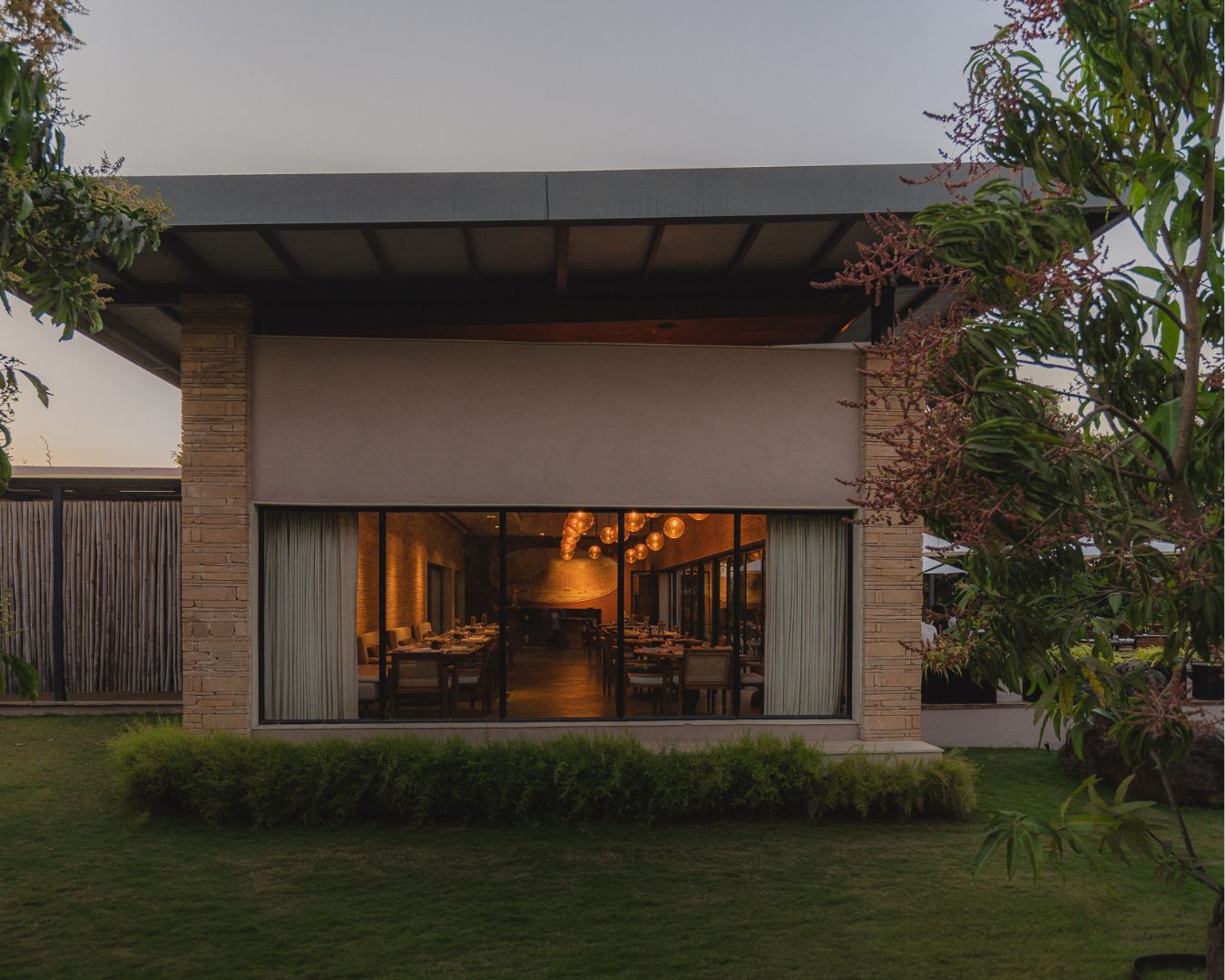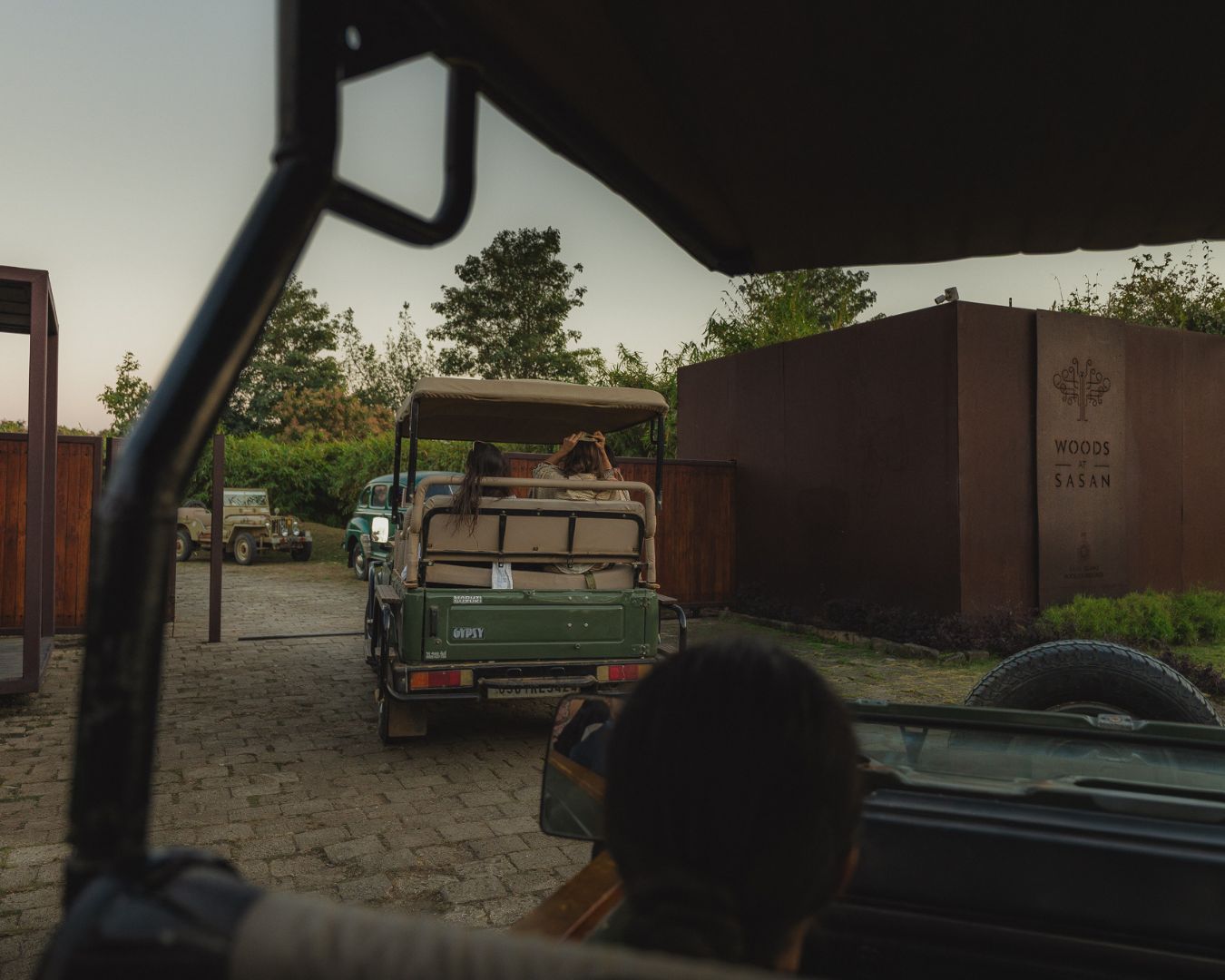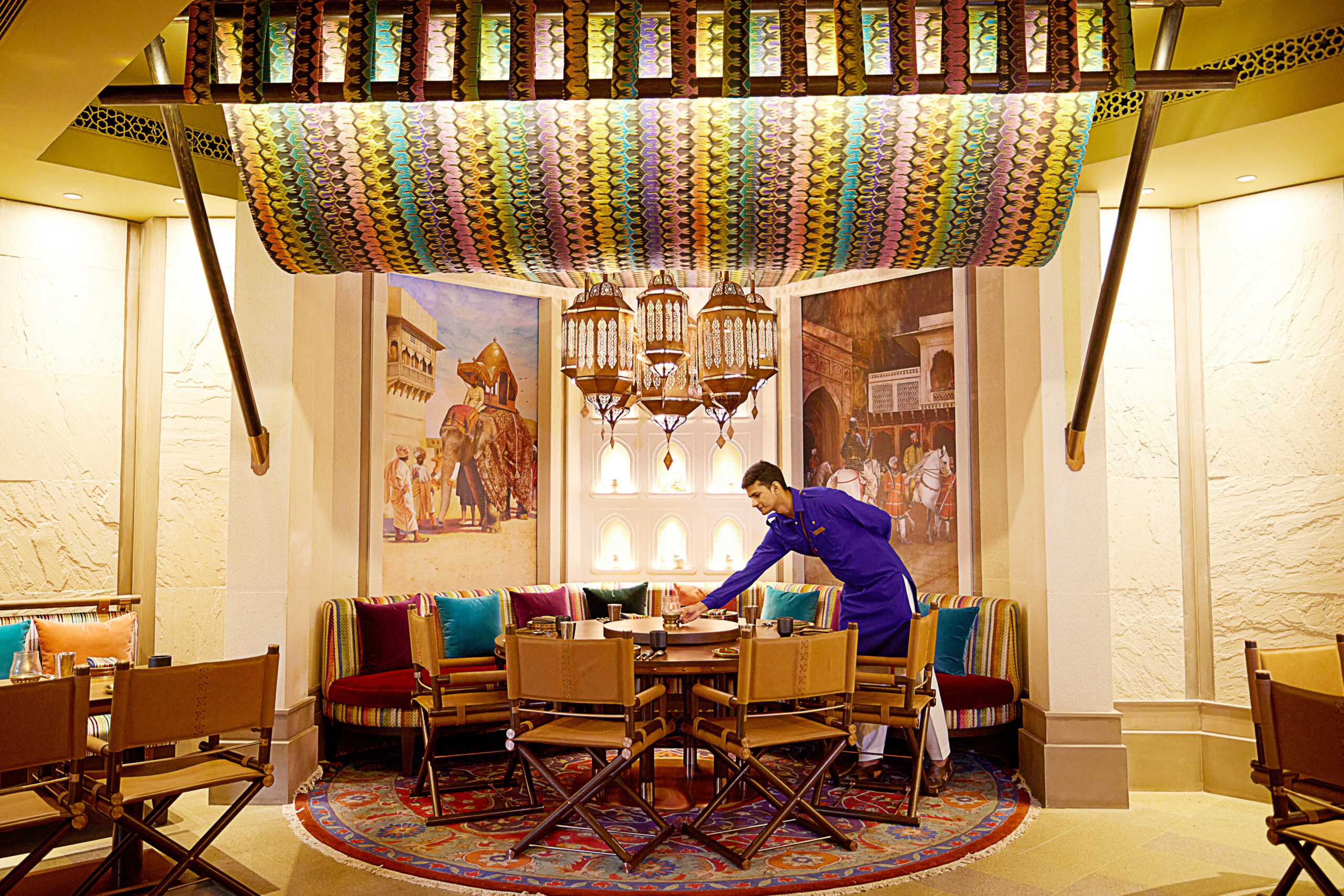Somewhere between the second wellness app download and the third productivity hack, we began shaping restoration into a project — when it was always an act of remembering. In the understory of Gir’s mango orchards lies a question most urban lives don’t leave room to ask. Not ‘what do I need?’ but ‘what have I forgotten?’ And perhaps more urgently: where do you go to find intentional spaces for the asking? Woods at Sasan sits within 8 acres of this inquiry, where the last Asiatic lions’ territory begins and human urgency ends. The land itself practices reminiscence, of cadences older than cities, connections deeper than convenience, and what it means to belong to something larger than yourself.
At its writing retreat with Bhavna Kher, it’s clear — under the mango trees in a lush orchard — that the elements of nature are contributing to literary inspiration as much as the profound conversations between the mentor and the curious minds. The arts, such as writing, find a home within the greens — after all, the philosophies of what surrounds us, and the creative disciplines we immerse ourselves in, both find a quiet joy in companionship.
Where the lion’s territory begins: Gir’s pride unbroken by human time
This is a retreat built to hold space for the asking. A place that understands luxury as an act of recollection, offering both escape and permission — to perform, to optimise, to simply remember. “The leading thought and aim during the initial stages of Woods at Sasan was to balance luxury with accessibility in a secluded location through thoughtful planning and design,” says Maulik Bhagat, Founder and CEO of 1000 Island Hotels and Resorts. “Embracing elevated essentialism — the focus was on what truly matters, with no facades or excess.” What matters, it turns out, are the things we’ve been at risk of forgetting.
Walk through the property and you encounter materials that remember their origins. Bela stone walls in lime plaster, handcrafted furniture of reclaimed wood, hand-dyed khadi, and terracotta. Nothing here is imported. Nothing claims to be what it isn’t. “The use of local materials and emphasis on sustainable design ensured the property integrated with its surroundings,” Bhagat reflects. Each material speaks of its place, chosen for its authenticity and sense of belonging. It’s a quality that seeps into the writing that comes from the retreat — not forced, yet quietly encouraged by the surroundings.
American biologist EO Wilson proposed the biophilia hypothesis — that humans possess an innate tendency to seek connections with nature and other forms of life. At Woods at Sasan, every material choice honours this deep-seated need, creating spaces that feel less like accommodation and more like homecoming. This is biophilic design in its truest expression: as both an aesthetic trend and a psychological necessity. The architecture remembers too. Floor-to-ceiling windows and large doors blur boundaries between inside and outside, offering unobstructed views of the Gir landscape — regulating circadian rhythms — the body’s oldest memory.
Biophillic intention: Bela stone and reclaimed wood in conversation with the forest
What Woods at Sasan ultimately leads its guests back to is purpose. There are first places where we live, second places where we work, and third places where we gather. The Fourth Place, then, is where we go when those aren’t enough — when we need to look past what we do, and into who we are. “Retreats serve as intentional spaces — what we might call Fourth Places,” Bhagat explains. “Where the primary activity is not simply relaxation, but the continuous process of interpreting, understanding, and making sense of life’s complex patterns.” In answering our initial question, the Fourth Place reveals itself — a space we return to for what we’ve forgotten. Each experience at the retreat — from writing to walking, from rest to reflection — becomes an entryway where the ordinary takes on the texture of meaning.
With profound intent — felt in the hospitality of the staff and passion of those caring for the wildlife in the area — the Writing Retreat became exactly that: sanctuaries for meaning-making, spaces that go beyond the transactional nature of a typical stay. “At Woods, the intention behind retreats is to hold space for these conversations and experiences,” Bhagat notes, “encouraging guests to leave not with final answers but with a larger map.”
Guided walks through Gir become pilgrimages of recollection. “It’s not just about enjoying the beauty of the surroundings but about fostering a sense of kinship and responsibility,” Bhagat reflects. “This relationship is all about slowing down, noticing the small wonders — the play of light through the trees, the songs of bird at dawn — and realising that nature’s rhythms are an invitation to restore one’s own inner balance.” With each step, one remembers how to notice these things. Restoration, after all, is just another word for remembering what wholeness feels like.
(L-R) At the table — tradition translates into flavours older than taste; In the company of the orchard: The path less urgent
What distinguishes Woods at Sasan though, is how it remembers the future. Recognised as India’s first regenerative hotel, the property operates on principles that remember what indigenous cultures never forgot: that we are borrowing this earth from future generations. Their model is built around self-regulating ecosystems and creating employment opportunities for local communities. “It is more than philanthropy,” he says. “It is investing in our future.” Perhaps, remembering that the future depends on how well we honour our responsibilities now. In that sense, the Fourth Place extends beyond the physical — into a way of being, a practice of returning to balance and living with reverence for what endures. This is the paradox Woods at Sasan holds with grace: offering modern conveniences while helping guests realise they need only a few of them.
As the literary arts took over the mango orchard each afternoon, in the distance, Gir’s wilderness continued its ancient practice. Lions move through their territory with certainty, and leopards claim the shadows. The forest holds memories in root systems and mycorrhizal networks that connect it all beneath the surface. At Woods at Sasan, guests discover what it means to become part of that continuity. As Bhagat reflects, “A sustainable ecosystem is a successful ecosystem.” The retreat’s greatest gift, then, is what it helps you remember: that luxury is alignment, that wealth is presence, and that the most radical act in our age of infinite scroll and fractured focus is simply to pay attention.
In the understory of Gir: Where the Fourth Place reveals itself
Across its landscape, every gesture of design, care, or conversation seems to point back to the same truth: that the Fourth Place emerges from remembrance. Here, Woods at Sasan offers something increasingly rare — a place where the answer to the question becomes clear: you go here to find the intentional space you’ve been seeking. The Fourth Place is never elsewhere, it lives wherever you remember how to be.
Featured Image Courtesy Woods at Sasan









